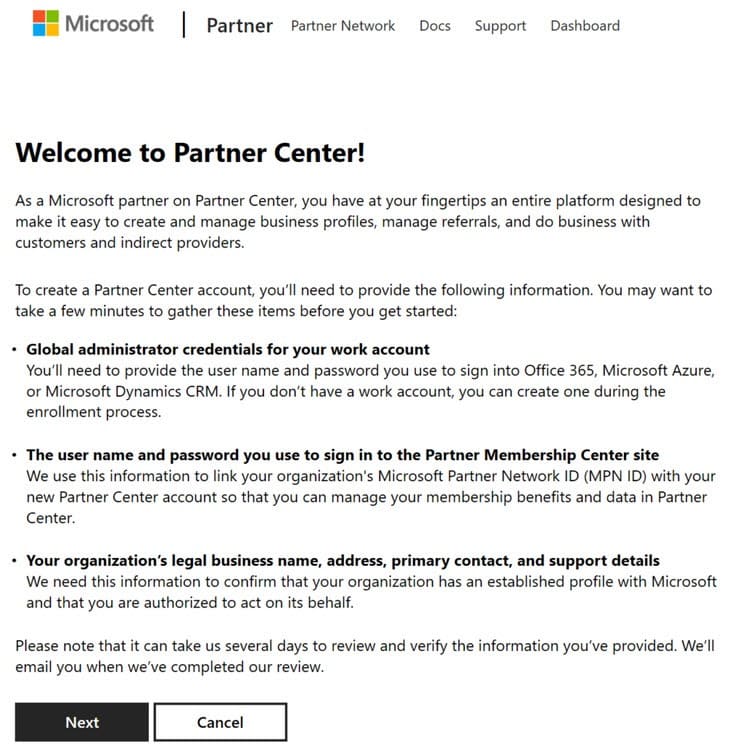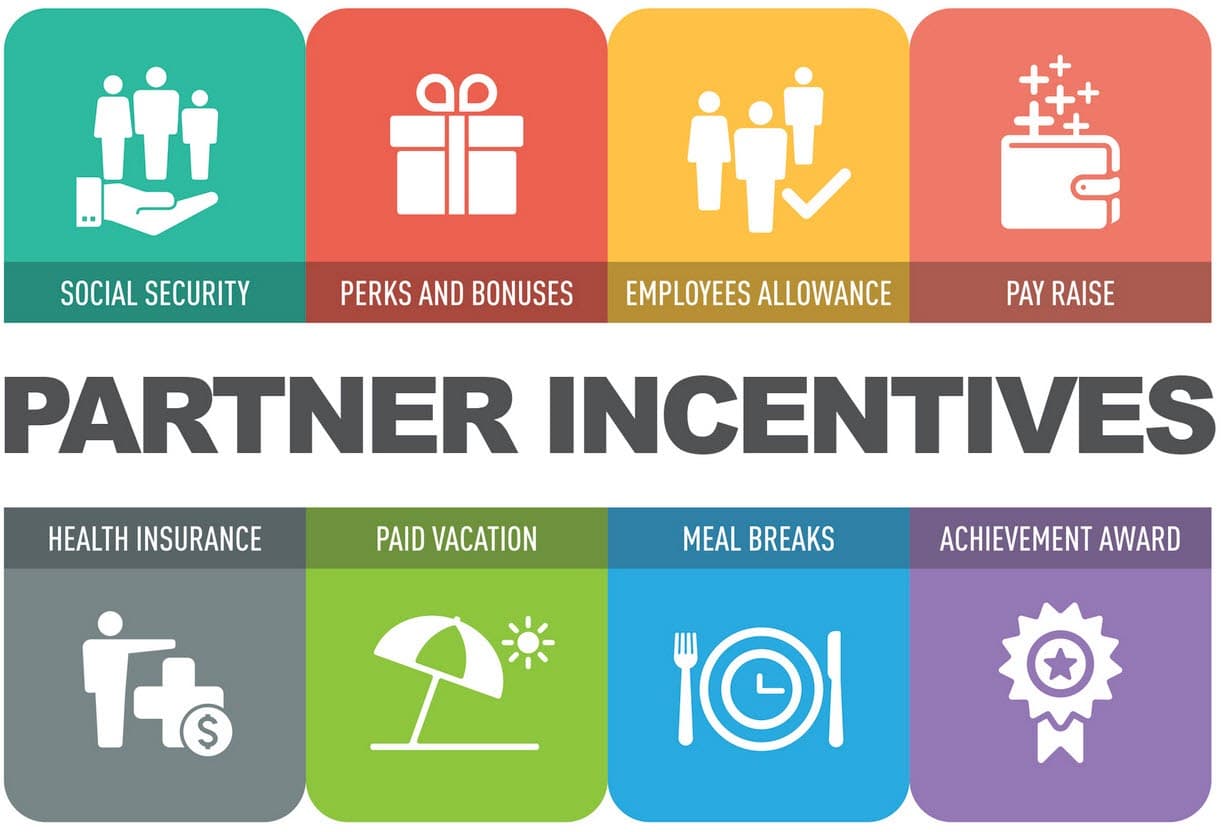No one wants to enter into a channel partner program and feel they’re unprotected. To prevent this from happening to your business, you’ll need to create a channel partner agreement.
Before engaging in a channel partnership, it’s a good idea to understand how a partner can promote your products and services. It’s important to for a business relationship to be mutually beneficial in order for everything goes smoothly. And when you’ve put your expectations in a written contract, this helps safeguard your business in case there’s a problem
To keep your business and your partner are on the same page, it’s best to get everything in writing in a channel partner agreement. Our channel partner agreement template will take you through all the essential sections to include in any partnership agreement.
What is a channel partner?
Channel partners are any third-party businesses or individuals that help market and sell the products or services of other companies.
To achieve success, certain companies find it’s beneficial to partner with other businesses as part of a channel partner program. In the next section, we go over the most common examples of channel partners.
The 6 main types of channel partners
1. Retailers: Certain retail companies, including Wal-Mart, Target, and Kroger, depend on selling products from third-party companies for a profit. Keep in mind, this doesn’t mean you have to partner with retailers based in the United States. Your company might have more success by partnering with retailers located in other parts of the world.
Depending on the retailer’s popularity and how good of a fit they are for your brand’s target audience, retailers can become extremely valuable parts of a channel partner program.
2. Wholesalers: If you’re looking for someone to purchase large quantities of your company’s goods, you’ll want to find wholesalers. Retailers might have limitations on how much of your company’s inventory it can purchase, but this isn’t the case for most wholesalers. These types of resellers prefer to buy in bulk and sell these goods to their own network of buyers.
3. Distributors: Distributors are another essential element of any business partnership. Whereas wholesalers purchase large quantities of products, distributors typically purchase fewer quantities. So what makes them so valuable? Their relationships with retailers. It’s rare for a large or medium-sized retailer to directly contact your business to get your products into their stores. Instead, these retailers contact distributors to help them determine what ends up on store shelves.
4. Brokers: Not every partner wants to buy and sell your company’s product directly. Sometimes, a partner may be working on behalf of another company wanting to purchase goods from a third-party. To achieve this goal, certain companies will hire brokers or agents to find and establish partnerships with other businesses.
5. Affiliates: With the rise of digital marketing, there is an increasing amount of companies that depend on affiliates as valuable business partners. In an affiliate program, a person or company sends qualified traffic to your business. If someone makes a purchase or completes some type of action, you pay a commission to the affiliate who sent you this visitor.
6. Referral partners: Referral partners are channel partners who agree to directly recommend your business to people they’ve already developed a relationship with, in exchange for a set referral fee. These partners are different from the people who sign up for a referral program, because the referral partnership arrangement is more formal and bound by a contract. Referral partners may also receive training on how best to promote your company.
What is a channel partner agreement?
A channel partner agreement is a binding contract that potential partners need to read, understand, and sign before doing business with your company. It outlines the terms of the partnership between both parties, including expectations, compensation, and contractual obligations.
Channel partner agreement template: 10 major sections to include in your agreement
Now that you’ve learned general information about partnership agreements, it’s time to dig deeper into the terms of this binding agreement. The exact agreement terms will vary based on the partnership type you choose. However, every partner agreement needs to have certain specific sections that cover key provisions of this agreement. Here are the sections that should be in every company’s partner agreement.
1. Definitions
Certain sections of partner agreements can become a little complicated. This type of agreement often requires legal language and marketing jargon that partners might not be familiar with.
Fortunately, you can solve this problem by including a glossary of business terms partners will come across that require a little more explanation.
In this section of a partnership agreement, you’ll typically see lots of terms having to do with the “end-user.” If your company is a service provider, for example, the end-user you would reference in a partner agreement would be the person subscribing to your company’s service.
Another term you’ll often see is “hereunder.” Often used in legal documents, hereunder simply means something that occurs further in the document.
2. Purposes of this agreement
Name your business and the partner. State that the agreement is meant to contractually establish a partnership between the two parties, and briefly name and describe the type of partnership that you’re entering into.
3. Responsibilities
Outline the goals that each party will help the other achieve through the partnership. What are the responsibilities of your partner, and what types of sales, marketing, or promotional efforts will they engage in? In turn, what is your brand responsible for providing the partner?
4. Confidentiality obligations
Most successful partnerships require a strong degree of collaboration. When this type of relationship happens, some type of confidential information gets exchanged along the way. To protect your company against trade secrets getting out, your partner agreement needs to include confidentiality obligations.
Having a confidentiality obligation protects your company’s trade names, trade secrets, service marks, proprietary rights, and other types of valuable intellectual property. It also protects your company in the event of a partner trying to reverse engineer your company’s processes.
5. Incentives and payment terms
To motivate companies to enter a joint venture with your business, it’s wise to offer some marketing incentives. There are many ways for a company to incentivize potential business partners.
This section details the commissions or other incentives that partners are eligible to earn. It also covers payment terms, including how much your company will pay for a specific result and when these payments will be issued.
Cash commissions are a popular incentive (and the core of certain partnerships, like referral partnerships and affiliate programs). However, there are plenty of other ways to incentivize companies to sell your product, beyond cash payouts. Oftentimes, companies will combine several types of channel partner incentives. These other types of incentives include rebates, discounted or free products, vacations, and much more.
In this section of your partner agreement, you’ll need to cover exactly what types of incentive rewards are available for business partners, the value of these incentives, and what they must do to become eligible for these rewards.
6. Indemnification section
Throughout a partnership with another business, lots of costs will be incurred. To indemnify a business partner means that your company will take care of costs incurred by the other party. The exact terms of this section entirely depend on what your company is and isn’t comfortable paying.
Imagine you own a company that produces baseball gloves. In time, you partner with a retailer. Another company sues your retail partner because it believes that your company’s product is a direct copy of theirs.
If your partner agreement has an indemnification clause, your company is on the hook for the retailer’s legal expenses from this lawsuit.
7. Relationship with partners (independent contractors)
It’s important to note in your company’s channel partner agreement that they’re not employees of your business. Instead, make sure the agreement notes your partners as independent contractors. This protects your company from having to pay for a partner company’s benefits or tax costs.
8. Marketing efforts and terms
Hopefully, your company’s partners are eager to start promoting your company’s product. But, it’s important to remember that most industries have strict advertising guidelines to protect consumers. If these applicable laws aren’t followed, it can have negative consequences for both your company and its partner. You don’t want a partner making third-party claims that your company can’t verify.
To prevent these types of problematic situations and the likelihood of breaking applicable laws, your partner agreements need to have a section that covers marketing efforts. This section details how partners can and can’t promote your company’s products and services.
You can also require the partner to obtain prior written consent before making any changes to the marketing message. It’s also a good idea to list all information, from product claim guidelines to your partner’s use of your company logos, in this section.
9. Termination of this agreement
Unfortunately, there’s no guarantee that a new joint venture will go smoothly for everyone involved. What happens if a partner violates the terms and conditions of this agreement? For instance, a partner could infringe on your company’s intellectual property rights and other types of trade secrets, or blatantly misrepresent your products in an attempt to earn more commissions.
Taking these situations into consideration, it’s a good idea to have a termination section, to cover what consequential events happen if there is a breach of this agreement.
You might also include terms that outline how and when a partner can choose to end the agreement, including how many days notice they must give if they’d like to cancel the contract. That way, partners can’t just exit the relationship on any grounds, but they do have some flexibility if the strain of the partnership outweighs potential benefits.
Let’s say your business enters a year-long agreement with another company. After three months pass, the partner business can’t keep up with your company’s demand. Without a termination clause, you’ll likely be stuck in this partnership throughout the contract’s one-year duration.
10. Signature section
Include space for you and your partner to sign the agreement, and to fill in the effective date on which the agreement becomes legally binding.
If you’re using Referral Rock, anyone who joins your partner program automatically agrees to its terms and conditions. No need to wait on partners’ signatures; just send them the agreement or terms and conditions page, and give them a link to register for the program.
Important channel partner agreement guidelines to follow
We’ve put together a few guidelines to follow as you prepare this type of document. However, we are not law experts. Considering the importance of this type of legally-binding document, we recommend contacting a legal professional for help with creating a channel partner agreement.
Don’t leave anything to chance: It’s tempting to want to get a channel partner agreement ready as fast as possible. However, this isn’t a mistake you want to make. Rushing a channel partner agreement, or trying to do this on your own, will likely lead to lots of headaches in the future. Writing down all of the terms of this agreement will take time and effort, but it’s much wiser than risking the future of your business because you left something out.
Try to minimize the use of industry terms: One of the main goals of any business agreement is to make it as easy as possible for other parties to understand. To achieve this goal, you’ll need to make sure you minimize the use of jargon or terms that might confuse others. The last emotion you want a business partner to feel while reading your agreement is confused. If you have to include a term but are unsure whether or not someone will understand it, include a glossary in this agreement.
Include charts and graphs: Understandably, most people don’t look forward to reading over long business documents that are full of nothing but text. To solve this problem, try breaking up long sections of text with images. Of course, this doesn’t mean including any image you want. Instead, think about including graphs and charts that put this document’s data into a visual format.
Get a professional second opinion: In most situations, several people look over a business document before sending it out. This strategy is helpful because it’s human nature for the sole creator of a document to miss something. As mentioned earlier, it’s a good idea to have a legal professional take a second look at your company’s channel partner agreement. This small step will help ensure that your new agreement is error-free and ready to send over to a potential partner.
If you’re looking to create a referral partnership or work with affiliates, we have the following resources and free channel partner program template downloads available:
In conclusion
Your business needs to protect itself at all costs. Before you enter into your next partnership with a distributor, retailer, wholesaler, or something similar, make sure you have a channel partner agreement in place. This type of agreement ensures that your company stays protected and you enjoy peace of mind.
As for what to include? Consult our channel partner agreement template as you create your document, to ensure you cover all the essential contract sections.
Looking for the right software to run your partner program? Check out our guide to PRM software.






